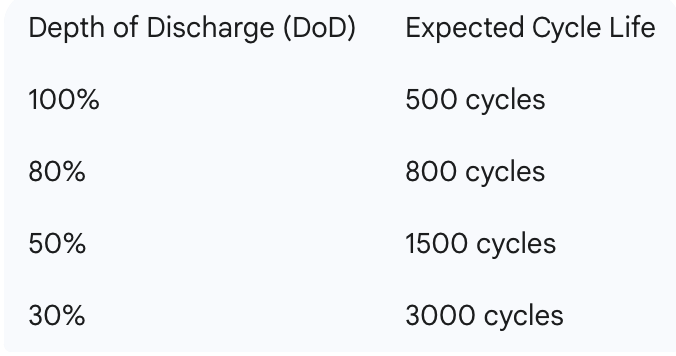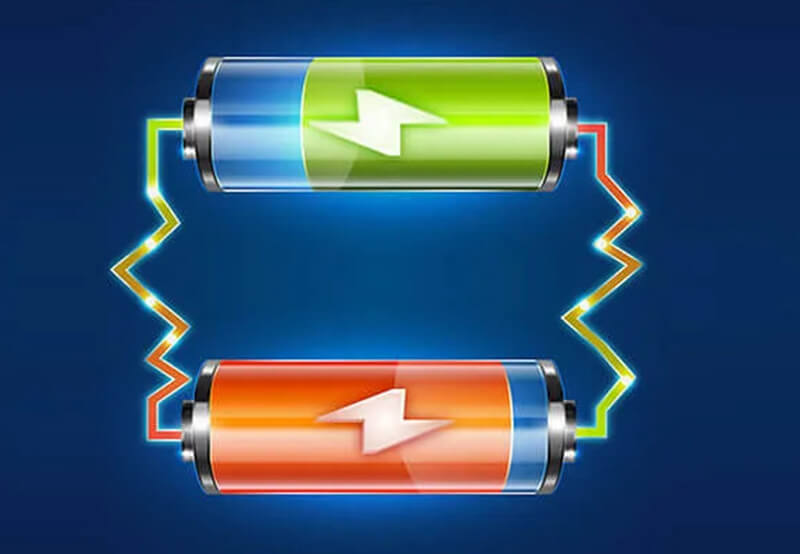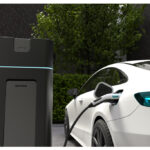A Complete Guide to Depth of Discharge and Battery Life Cycle
In today’s world of clean energy and portable power, batteries are essential—from smartphones and EVs to solar systems. Yet, few understand the key metric that affects battery performance: Depth of Discharge (DoD). DoD measures how much of a battery’s capacity has been used, directly impacting its efficiency, lifespan, and replacement frequency. This blog explores what depth of discharge means, how it differs from state of charge (SoC), and its effect on the battery life cycle. We’ll also explain battery capacity and the relationship between DoD and cycle life—crucial knowledge for users of solar homes, EVs, or industrial backup systems.
Understanding the Basics: What Is Battery Capacity?
Before we describe what is depth of discharge, let’s first learn what is battery capacity. Essentially, battery capacity is the amount of energy that a battery can hold, typically stated in ampere-hours (Ah) or kilowatt-hours (kWh). It is similar to the capacity of your gasoline tank in your vehicle—the larger the tank (or capacity), the greater the amount of energy it can store and the longer it can operate before it needs a refilling.
For instance, if a lithium-ion battery has an 100 Ah capacity, it is able to give 100 amps for one hour, or 10 amps for 10 hours, and so forth.
Capacity is often confused with energy consumption, which brings us to the concept of depth of discharge
What Is Depth of Discharge (DoD)?
Depth of Discharge (DoD) is a percentage that indicates how much energy has been extracted from a fully charged battery. If your 100 Ah battery has extracted 30 Ah out of it, your DoD is 30%.
So, then, what is depth of discharge in practical terms? Here’s a good way to put it in perspective:
- A DoD of 100% is used to state that the battery is run dry (fully discharged).
- A DoD of 0% states that the battery is charged.
For instance, considering your solar battery bank is charged during the day and powered up during the night, what energy is used at night will dictate the DoD.
Depth of Discharge vs State of Charge (SoC)
If DoD measures what’s used, State of Charge (SoC) measures what’s left.These two are complementary concepts:
- DoD + SoC = 100%
So, if your battery has a DoD of 40%, that means its SoC is 60%, or it still has 60% of its energy available for use.Understanding both metrics is critical. Relying only on DoD without tracking SoC could lead to overuse, damaging the battery. Similarly, tracking SoC alone won’t tell you how much energy you’ve already consumed, which is vital for power management, especially in renewable energy systems.
Why Depth of Discharge Matters
Now that we’ve answered what is depth of discharge, let’s get into why it matters.Battery performance isn’t just about how much energy you can store—it’s also about how efficiently and safely you can use that energy over time. Here’s where DoD plays a pivotal role:
1. Battery Health: The deeper you discharge a battery regularly, the shorter its lifespan becomes. Draining a battery to 100% DoD every day can significantly reduce its useful life compared to keeping it at shallower discharges.
2. Cycle Life: Batteries have a finite number of charge-discharge cycles. Depth of discharge vs cycle life is a well-documented relationship: lower DoD usually means more cycles. For example:
- 100% DoD might give you 500 cycles.
- 50% DoD might give you 1500 cycles.
- 30% DoD might offer up to 3000 cycles.
3. Lower DoD: If your goal is longevity, maintaining a lower DoD is crucial.
4. Battery Charging Life Cycle Efficiency: Charging a deeply discharged battery takes longer and consumes more energy. Shallower discharges mean quicker recharges and less stress on the system, increasing overall efficiency.
5. Energy Planning: For solar or off-grid systems, understanding DoD helps users optimize energy storage and avoid power shortages. You’ll know how much of your stored energy is usable and when to conserve.
6. System Design: Battery banks for homes or commercial uses are often sized based on desired DoD to avoid damaging the batteries. A design that plans for only 50% DoD will require a larger battery bank than one that regularly goes to 80%.
Depth of Discharge vs Cycle Life: Why It’s a Balancing Act
Let’s focus a bit more on depth of discharge vs cycle life, one of the most crucial trade-offs in battery maintenance.A deeper DoD gives you more usable energy per cycle, but it comes at the cost of reduced battery life. Shallow discharges preserve the battery but may require a larger, more expensive battery bank to meet your daily energy needs.
Battery manufacturers usually provide charts showing the number of cycles expected at various DoD levels. Here’s a simplified example:
When planning your energy system or even managing a single battery, always consider how often you discharge and how deeply. This balance will help extend the battery charging life cycle and save costs in the long term.
Real-Life Examples of Depth of Discharge
1. Electric Vehicles (EVs): Manufacturers often limit usable battery capacity to avoid deep discharges. For instance, a Tesla might have a 100 kWh battery but only allow access to 85 kWh. This built-in buffer protects the battery and prolongs its life.
2. Solar Energy Systems: If your solar system is designed to run at a daily DoD of 50%, you’re preserving battery health while still getting reliable energy output. Oversizing the battery bank can help achieve this.
3. Uninterruptible Power Supplies (UPS): Backup systems are designed for shallow discharges—usually 20–30% DoD—because they only need to provide power for short outages. This keeps them ready for the next emergency.
Frequently Asked Questions (FAQs)
Depth of discharge is the percentage of the battery’s capacity that has been used. If your battery is half-drained, its DoD is 50%.
Because the depth to which you discharge a battery affects its life span. Deeper discharges lead to fewer usable charge-discharge cycles.
Yes. Regularly discharging to 100% DoD can severely shorten battery life. Most modern systems avoid this with built-in buffers.
It depends on the battery chemistry. For lithium-ion, keeping DoD below 80% is ideal. For lead-acid batteries, staying under 50% is better.
They are opposites. If DoD is 40%, SoC is 60%. Together, they always add up to 100%.












